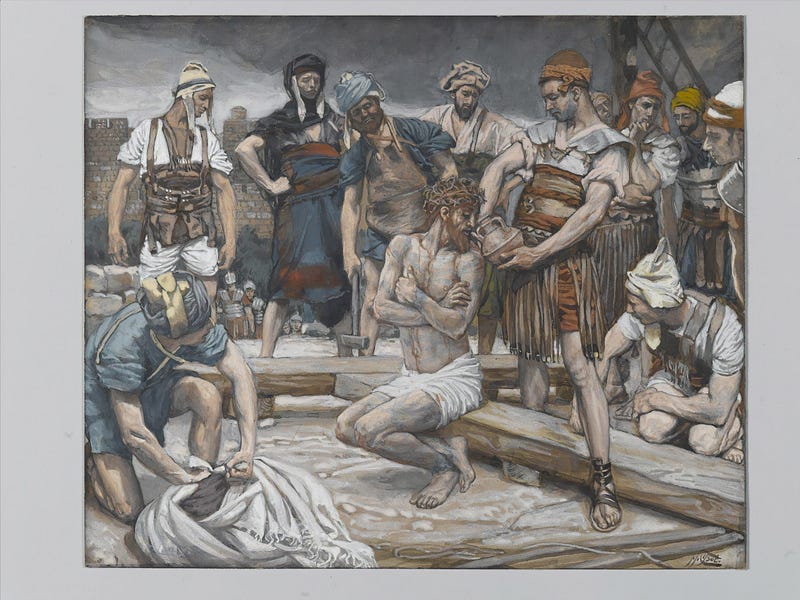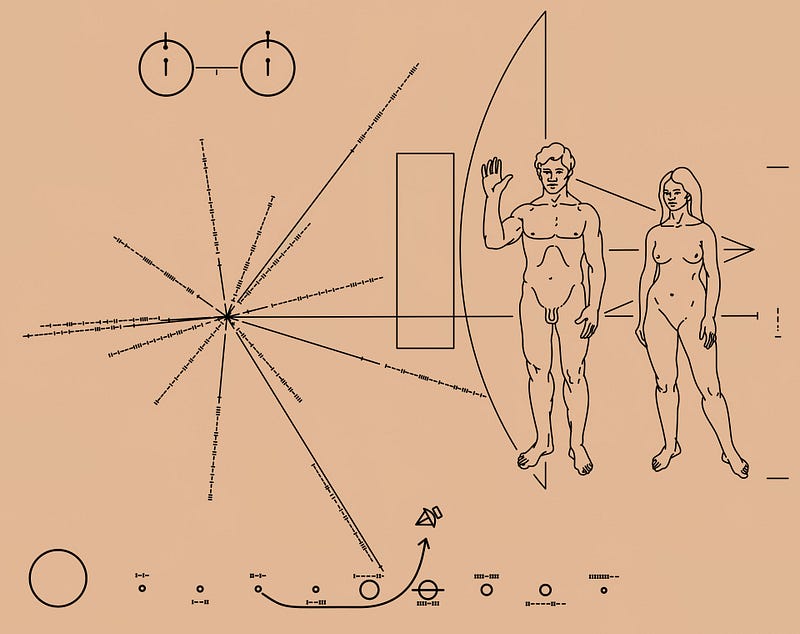# Psychedelic Plants and Their Impact on Religion and Science
Written on
Chapter 1: The Enigmatic Atropa Belladonna
The fascinating history of psychoactive plants stretches from Cleopatra’s use of nightshades to contemporary treatments for myopia, intertwining spiritual practices, medical progress, and ancient lore.
Atropa belladonna, a plant renowned for its psychoactive properties, shares intriguing similarities with the "eye-opening" effects of the forbidden fruit mentioned in Genesis. This plant was particularly favored by Renaissance women, including Cleopatra, who famously used it to enhance her eye appearance by dilating her pupils.
Recent findings from Ohio State News in 2023 highlight Atropa belladonna’s potential in treating nearsightedness. The study revealed that a low-dose atropine eye drop regimen significantly slowed the progression of myopia in children aged 6 to 10, a condition projected to affect 50% of adults globally by 2050.
The U.S. Forest Service has also validated the historical and medicinal significance of atropine. During World War II, it served as the sole antidote for a lethal nerve gas created by the Germans. Nowadays, atropine is commonly utilized by ophthalmologists for pupil dilation during eye examinations and surgical procedures, and it is also employed as an antidote for opium and chloroform poisoning.
Psychoactive plants like Atropa belladonna may have been instrumental in shaping monotheistic beliefs, as suggested by the works of Renaissance figures such as Leonardo Da Vinci. Another notable psychoactive plant mentioned in the Bible is myrrh.
Brigham Young University researchers have explored myrrh's psychoactive properties, particularly in the context of Jesus' New Testament narrative. Matthew describes Christ being offered vinegar mixed with gall, while Mark’s account refers to wine mixed with myrrh, indicating that the gall Matthew referred to might have been a bitter herb like myrrh.

The term "gall" generally refers to anything bitter, and ancient cultures often added psychoactive bitter plants to wine, including henbane and myrrh. Myrrh is prominently featured in the New Testament, notably as a gift from the Zoroastrian magi, who also offered psychoactive frankincense, coinciding with the appearance of the Star of Bethlehem.
The Smithsonian has noted that modern science has uncovered fascinating medicinal benefits of myrrh and frankincense. Researchers from the University of Florence found that compounds in myrrh activate the brain's opioid receptors, providing insight into its pain-relieving properties.
Chapter 2: The Crown of Thorns and Other Psychoactive Links
The video titled "Psychedelics in the Bible" explores the connection between psychoactive substances and spiritual experiences throughout biblical texts.
Historically, psychedelic roots are deeply intertwined with monotheistic traditions, and the legendary crown of thorns worn by Christ may also have psychoactive properties. Researchers from Brigham Young University have elaborated on the Christ thorn's association with nightshades and acacia species, both known for their psychoactive effects. Acacia, in particular, contains DMT and has historical connections to the Ark of the Covenant.
Moreover, the potion Circe offered Odysseus in Homer's epic was likely derived from a poisonous nightshade, further illustrating the use of psychoactive substances in ancient narratives. Homer’s poetic legacy reflects a profound understanding of mortality and beauty, encapsulated in his words about the gods envying mortals due to their fleeting existence.
The Eleusinian Mysteries of ancient Greece were centered around a psychoactive drink known as kykeon, attributed to the demi-god Triptolemus, who is believed to have taught agriculture to humanity. Triptolemus is often depicted with a sacred potion while riding a flying chariot, symbolizing the connection between psychoactive brews and technological advancement.
Philosophers like Plato and Socrates were part of these ancient rites, and the experiences they underwent had a lasting impact on their philosophical views. Socrates articulated his belief in the immortality of the soul, suggesting a cyclical relationship between the living and the dead.
Martin Luther King Jr. noted that the influence of the Eleusinian Mysteries persisted within Christianity, demonstrating the continuity of psychoactive traditions. Although the true nature of the Eleusinian potion remains a secret, Plato described the divine experiences that participants encountered, linking them to the mythos surrounding Dionysus, the god of ecstasy and intoxicants.

In the Biblical narrative of Genesis, Jacob's encounter with the divine is linked to the DMT-containing Acacia tree, which has associations with mystical experiences. In a groundbreaking 2019 study, researchers at the University of Michigan discovered DMT in the pineal glands of mammals, reinforcing the connection between this substance and mystical consciousness.
The exploration of consciousness, both human and animal, has led to intriguing scientific inquiries. Notable figures such as Carl Sagan and Frank Drake have pursued communication with extraterrestrial beings, often using psychoactive methods to expand their understanding of consciousness.
In the 1970s, the Pioneer Plaque was sent into space, symbolizing humanity’s attempt to connect with other intelligent forms of life.

Interestingly, the realm of extraordinary intelligence is not limited to extraterrestrials. Dolphins and octopuses exhibit remarkable cognitive abilities, and studies have shown that administering MDMA to octopuses produces significant behavioral changes.
Ultimately, the exploration of consciousness may reveal that both humans and animals share a deeper connection that transcends the physical body, suggesting that the roots of civilization may lie in our shared experiences with psychoactive substances.
Continued: Psychoactive Substances at the Roots of Civilization:
Exploring the historical significance of various substances from ancient rituals to modern scientific research.